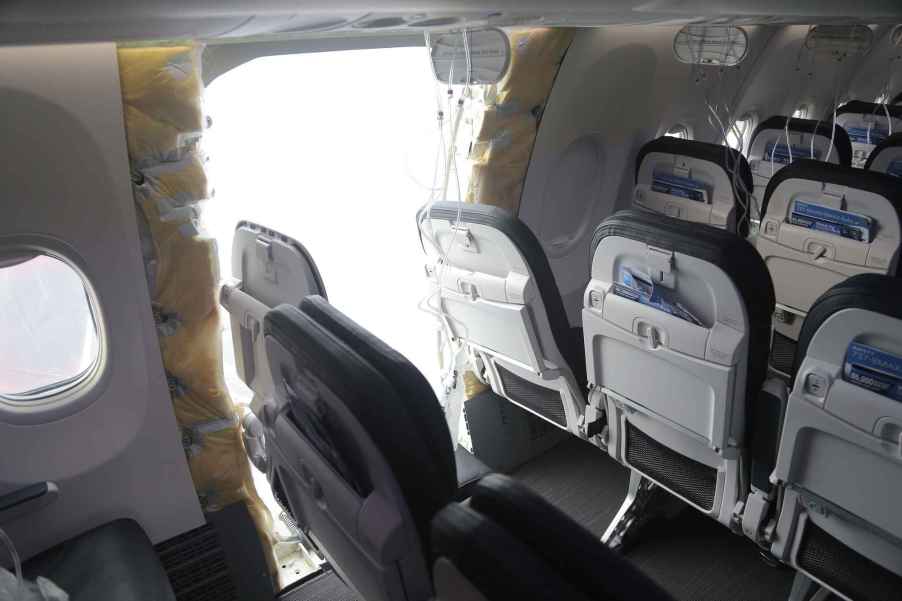
Pilot’s headset got sucked out of Boeing’s lost door plug, says she feared people had gone missing at 16,000 feet, too
On January 5, 2024, American Airlines pilot Emily Wiprud boarded flight 1282. As she navigated the Boeing 737 Max 9 airplane out of Portland, the pilot recalls a sudden explosion and whoosh of air at 16,000 feet.
“My body was forced forward and there was a loud bang as well…The flight deck door was open. I saw tubes hanging from the cabin,” she told CBS News.
It turned out that a door plug – a large panel fitted into the plane’s left-side fuselage – ripped away from the aircraft. The NTSB would later identify the error on Boeing’s end. The company left the door plug unbolted and delivered it to the airline.
Wiprud recently told CBS News that the chaotic scene on January 5 was difficult to understand in the air.
“I didn’t know that there was a hole in the airplane until we landed,” she said.
“I knew something was catastrophically wrong.”
The wind force ripped Wiprud’s headset off. It sucked out of the door plug, back behind the left wing.
Wiprud looked back and saw empty seats. She also saw passengers in their seats staring back at her. Some of them had injuries. She feared the empty seats meant people were missing at 16,000 feet, too.
The wind also ripped the shirt off a teenager sitting near the gaping hole. Reportedly, his mother grasped him tightly to keep the force from sucking him out of the plane.
Wiprud and team landed the plane back in Portland without any missing crew or passengers.
The pilot’s account follows several major events and associated negative findings involving Boeing and its lack of quality control.
Ongoing Boeing incidents unfold outside of Earth’s orbit, too.
In June, Boeing’s Starliner spacecraft launched on its first crewed flight test to the International Space Station. While the craft docked at the ISS, it suffered a helium leak, leading to faulty thrusters. Two NASA astronauts remain stranded there. NASA and Boeing set the mission to last only a few days, but the crew now plans to return via SpaceX’s craft in early 2025.



